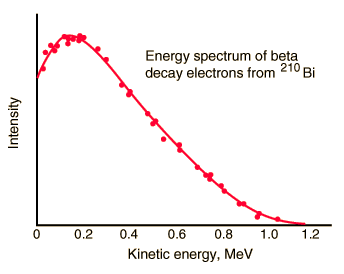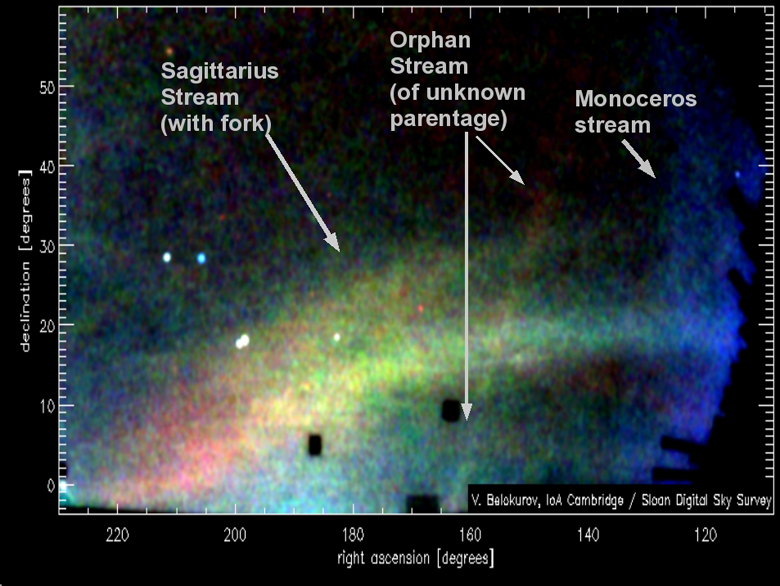DdH is back! This time over at
sciencewatchdogs.org (aka
physicspolice.org). He has returned to form, ranting about his favourite topic; the neutrino. You can read the post in its full glory
here. At least this latest effort is a bit more civil and coherent than his last, the magnificently mad "
Relativity's Incestual Child Must be Euthanized" or who can forget the amazing scientific rigor he brought to
"
Santa Uses Relativity - It's All Magic Anyways!" where he attempted to tear apart a lighthearted Christmas story aimed at encouraging
children's interest in science.
This latest story is basically his objections to a UK project (original story
here) to try to detect neutrinos by listening for the sound generated as an ultra-high energy neutrino reacts with the atoms in sea water. This is unsurprisingly very difficult, if he stuck to pointing out how hard it is things would probably have been
ok. However his main objection is simply his belief that the neutrino doesn't exist, his reasons for this are that his pet theory of
Autodynamics (which can be seen to be false
here) says it doesn't. If it ended there really his post wouldn't be that interesting, however he does make several foolish statements that reveal his lack of understanding of the theory he is desperately fighting to replace, Special Relativity. For example:
In our lesson for today, let us be reminded that neutrinos exist everywhere SR is applied to decay cases and that the extra energy that appears from nowhere needs to be explained.
This is clearly not the case, the neutrino is only ever involved in decays where lepton number (a quantity that must be conserved in particle physics, in the same way that energy must) would otherwise not be conserved, one example would be the simple beta decay of a neutron to a proton + electron + anti-electron neutrino, the neutron and proton have zero lepton number and the electron has lepton number +1, so for the reaction to conserve lepton number there must be a particle of lepton number -1 to balance things out, that would be the anti-electron neutrino then. Of course because the
neutrino is so damn hard to detect when you look at this reaction in an experiment it appears at first glance that all there is being emitted are a proton and electron, this is just because the neutrinos react so rarely with matter. However the energetics of the detectable decay products, the proton and electron clearly demonstrate a third particle must at work, sharing some of the
energy of the decay.
This can be seen clearly in the figure below which shows the measured kinetic energy of electrons emitted by the beta decay of a neutron to a proton. Now the input energy must always be the same, because it is always a stationary neutron of fixed mass decaying into a stationary proton of fixed mass. The energy of the electron (and neutrino) comes from the difference in rest mass of the neutron (the heaviest of the two) and the proton. If only one particle was emitted by this decay then it would always have the same amount of kinetic energy, which would be equal to the difference in rest mass of the neutron and proton minus the rest mass of the new particle. The masses can be converted to energy via good old E=
mc^2. The fact that we always see a range of kinetic energy for the electron implies that another particle is present and sharing some of the energy, both for its small (or zero) rest mass and its own kinetic energy.

Contrary to
DdH's assertion in any reaction where lepton number is unchanged then
neutrinos are not required from a theoretical perspective and happily not needed to explain the energetics, an example of such a reaction would be alpha decay, where a large unstable nucleus spits out a helium nucleus. In this case special relativity correctly explains the energetics of the decay products without the need for a neutrino, which is fortunate because all of particle physics says that there shouldn't be one present in this reaction. If you look at the kinetic energy of the emitted alpha particles you will find that they always have the same energy, proving that no other particles are being emitted to share the energy.
The problem with
DdHs theory,
Autodynamics, is that it predicts exactly the same behaviour for both these cases, so to explain that one type of decay produces a range of kinetic energies but another type produces a single value is impossible. You would think that would be a major problem, well not for
Autodynamics, having as it does the amazing ability to totally ignore evidence that disproves it.
So in summary
DdH knows nothing about particle physics, but we already knew that.
Another interesting comment, in a, "he doesn't know what he's talking about" kind of way is this:
Yes, we know they don't exist but even so, we better watch out! I always contended that neutrinos if they exist, should have some detremental effect on health given that 5.44 billion solar neutrinos bombard every square centimeter of the earth per second. Something bad has to come out of it. Now they have a neutrino that is similar to the killer asteroids!
He is confusing the solar neutrinos (produced by fusion in the core of the sun) which are incredibly common, but have very low energies, with the exceedingly rare ultra-high energy neutrinos. The solar neutrinos are so low energy they can't do any damage to anything they hit, the ultra-energy ones could
conceivably do some cellular damage, but they are so rare that the chance of being hit by one is essentially nil. You'll accumulate much more damage over the year by being hit by cosmic rays than you will from neutrinos.
Another quote:
This sounds very familiar: low-number statistics. Somehow, the neutrino community has convinced the world that low-number statistics is not only viable, but necessary for "scientific" research with neutrinos.
This is another of his favourite canards, he claims that essentially all neutrino detections are false positives from other things such as cosmic rays. The problem is that experiments have been done using neutrino beams produced by particle accelerators, detections of neutrinos are only found when the particle accelerator is on and producing neutrinos, turn off the beam, the signal disappears. You may think that these detections could be other particles produced by the beam, however the detectors are usually located hundreds of miles away, through solid rock, no other possible particle produced in the accelerator could get anywhere near that far without interacting with the intervening material.
It continues to amaze me just how DdH has managed to convince himself he is correct in the face of mountains of evidence that prove he is wrong.
 There are several interesting things about this graph, one of which is simply the number of page loads a month, right now there are over 1.3 Billion page loads per month and there is no sign of the increase in traffic slowing. Although I am probably responsible for about 1% of those, I still find it a huge number and wonder how they will cope in the future.
There are several interesting things about this graph, one of which is simply the number of page loads a month, right now there are over 1.3 Billion page loads per month and there is no sign of the increase in traffic slowing. Although I am probably responsible for about 1% of those, I still find it a huge number and wonder how they will cope in the future.


















